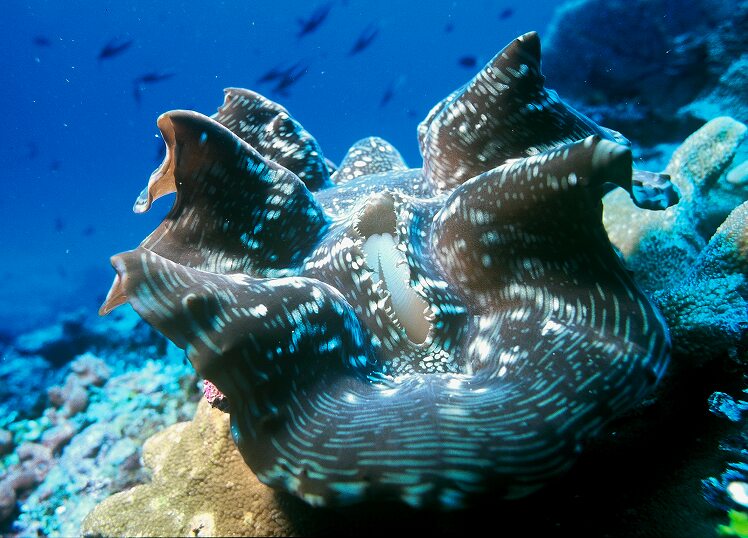cyclopeeze is too big for it though. ask chrish&barb on this website and for sure youll get all the right information.
as for lighting get something like a tek fixture or something with metal halides. you can get the odyssea light fixure and replace the ballasts. you also need to make sure your tank matures and has proper levels to keep them
Lighting Requirements for Tridacnids
Hello everyone, this is the updated version of my previous “Lighting Requirements for Tridacnids” thread. I hope this one will answer your questions in regards to providing your clam with the best lighting conditions possible. Most of the information here is based on personal experience and experiences shared by other fellow clam lovers. Supplemental information is credited to James Fatherree and his book, Giant Clams in the Sea and the Aquarium, and many thanks to Chris for his never ending help. Please read the entire post as the information is designed to support each other. (especially the Tridacna Crocea section)
Tridacnid Lighting Requirements:
Tridacna Crocea

These clams require the most light of the Tridacna family. They occur in the wild mostly in very clear waters less than 15 feet in depth. (6 meters according to J.F.) The minimum recommended lighting requirement for a healthy Crocea is under a 150 watt metal halide of a reliable 14k bulb at a maximum depth of 20 inches, preferably less. To be on the safer side, a 10k bulb is recommended, and is closer to the "true" color of natural sunlight. I have seen some Croceas under 70 watts of halide, but these are normally placed high up in the tank. 70 watt bulbs are also considered by some as the least developed bulb, therefore being more inefficient in terms of their output compared to their 150 watt counter parts. 150 watts of (14k) metal halides would be the minimum “safe” amount of lighting. They will do even better under a 250 watt or 400 watt metal halide. If you are using 250 watts and above, you can place the Crocea even deeper in your tank, or even use 20k bulbs. If using T-5s, make sure the bulbs have individual parabolic reflectors on them, and the clam is placed at the upper half of your tank to be “safe”. Power Compacts will in a lot of cases NOT be adequate for Croceas.
In the case of T-5 lighting, remember only the 10k bulbs produce enough photo energy for PAR on clams, and the actinics produce little to no PAR depending on color temperature. It is also noted that the longer the bulbs are, the more penetrating power they carry. Thus a Crocea should be fine in a 20 inch depth under a 36 inch fixture. Having a Crocea in a 20 inch depth under a 24 inch fixture raises doubts, as most 24 inch fixtures only have 4 T-5 bulbs under them, with 2 of them usually carrying heavy actinics or some shade of high color temperature bulbs. In this case a retrofit is recommended to be able to cram in more lower temperature bulbs.
Tridacna Maxima
These clams require almost as much light as Croceas if not as much. In the wild they have a maximum depth of occurrence slightly deeper than Croceas, but are again mostly found in very clean and shallow waters. The best bet is to place them in the same lighting conditions as you would light a Crocea. The “safe” amount of lighting would be under a 100 watt metal halide if they existed, so I’m going to say 150 watt 14k metal halide under 20 inches or less as well.
Tridacna Squamosa
These clams are much more forgiving in terms of light than the upper two tridacna species. Assuming they are not placed in a nano due to the size they can reach, they will be happy under metal halides of some sort, but will suffice with vhos, or even power compact lighting. There is no exact number for the wattage of the bulbs, but the “safe” amount of lighting would be anything above 100 watts of compact fluorescents in depths of less than 20 inches provided they are directly under the bulbs. T-5s are recommended over your regular power compact lighting, and a Squamosa will soak up Metal Halide lighting very happily.









